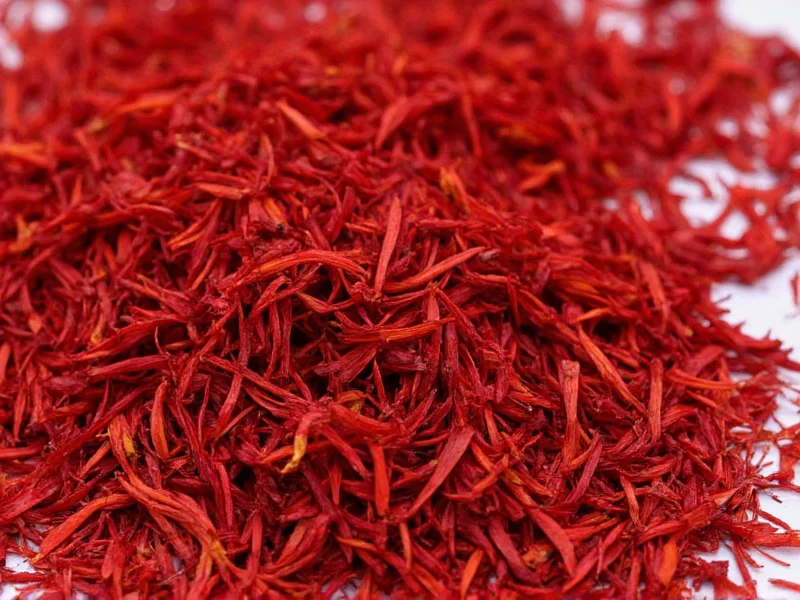Understanding saffron pricing requires examining why this spice commands such premium rates compared to other culinary ingredients. Saffron's extraordinary cost stems from its labor-intensive harvesting process—each delicate crimson stigma must be hand-picked from Crocus sativus flowers, with approximately 75,000 blossoms required to produce just one pound of dried saffron threads. This meticulous process, combined with seasonal growing limitations, creates inherent supply constraints that directly impact saffron cost per ounce.
Factors Influencing Current Saffron Price Per Ounce
The seemingly steep how much does pure saffron cost question has multiple dimensions. Several critical factors determine final pricing:
Quality Grading System (ISO 3632)
Saffron quality is scientifically measured using the ISO 3632 standard, which evaluates crocin (color), picrocrocin (taste), and safranal (aroma) content. Higher category saffron commands premium pricing:
| ISO Grade | Crocin Level | Price Per Ounce | Characteristics |
|---|---|---|---|
| Category I | ≥190 | $450-$650 | Deep red threads, strongest aroma, minimal yellow style |
| Category II | 150-189 | $350-$450 | Moderate red color, acceptable aroma, some yellow style |
| Category III | 110-149 | $250-$350 | Pinkish-red threads, weaker aroma, significant yellow style |
| "Saffron Powder" | Often untested | $100-$250 | High adulteration risk, inconsistent quality |
Geographical Origin Impact
Iran produces approximately 90% of the world's saffron, benefiting from ideal growing conditions in Khorasan province. Spanish saffron (particularly from La Mancha) commands premium pricing due to strict quality controls and branding, despite similar quality to top Iranian grades. Kashmiri saffron represents a smaller market segment with distinctive characteristics but faces production challenges.
Adulteration and Purity Concerns
The high saffron pricing factors create strong incentives for adulteration. Unscrupulous sellers may mix saffron with safflower, marigold petals, or food coloring. Pure, undyed saffron threads should exhibit consistent deep red color with minimal yellow style (the non-pigmented base). When purchasing, look for certification from reputable organizations like ISO or national saffron associations to verify authenticity.
Realistic Saffron Cost Expectations for Consumers
When evaluating buying saffron by the ounce, consider these practical insights:
- Retail markup: Grocery stores typically charge 2-3 times wholesale prices. A $400/ounce wholesale rate becomes $800-$1,200 per ounce on retail shelves
- Small quantity pricing: Vendors often charge premium rates for gram-sized portions (e.g., $15-$25 for 0.5g)
- Wholesale considerations: Significant discounts apply when purchasing 100g or larger quantities, though minimum orders may apply
- Seasonal fluctuations: Prices typically rise slightly after harvest season (November) as inventory diminishes
Assessing Saffron Value Beyond Price Per Ounce
When determining saffron value per weight, consider these often-overlooked factors:
Yield efficiency: High-grade saffron requires less quantity to achieve desired color and flavor. One ounce of Category I saffron may provide 20-25% more effective servings than Category III product.
Storage longevity: Properly stored in airtight containers away from light, premium saffron maintains potency for 2-3 years, improving long-term value.
Culinary application: For dishes where saffron is the star ingredient (like paella or risotto alla Milanese), investing in higher grades delivers noticeably superior results compared to budget options.
Current Market Trends Affecting Saffron Pricing
Recent global events have influenced saffron market price trends. Climate challenges in traditional growing regions, particularly drought conditions in Iran, have constrained supply. Meanwhile, growing culinary interest in Mediterranean and Middle Eastern cuisines has expanded demand. These opposing forces have maintained upward pressure on prices despite minor fluctuations.
Importantly, saffron represents one of the few agricultural commodities where manual harvesting remains essential—no mechanization exists for selectively picking the delicate stigmas. This labor dependency ensures saffron will maintain premium pricing regardless of broader agricultural technology advances.
Making Informed Saffron Purchases
When evaluating realistic saffron cost expectations, follow these guidelines:
- Verify ISO grading documentation from reputable suppliers
- Examine threads for consistent deep red color (avoid excessive yellow styles)
- Perform the water test: authentic saffron gradually releases golden-yellow color, not instant dye-like coloring
- Consider purchasing small trial quantities before committing to larger orders
- Store purchased saffron in opaque, airtight containers away from heat and moisture
Understanding the saffron quality and price relationship helps consumers make informed decisions rather than simply chasing the lowest price per ounce. The most economical choice often balances initial cost with potency, shelf life, and culinary performance.











 浙公网安备
33010002000092号
浙公网安备
33010002000092号 浙B2-20120091-4
浙B2-20120091-4